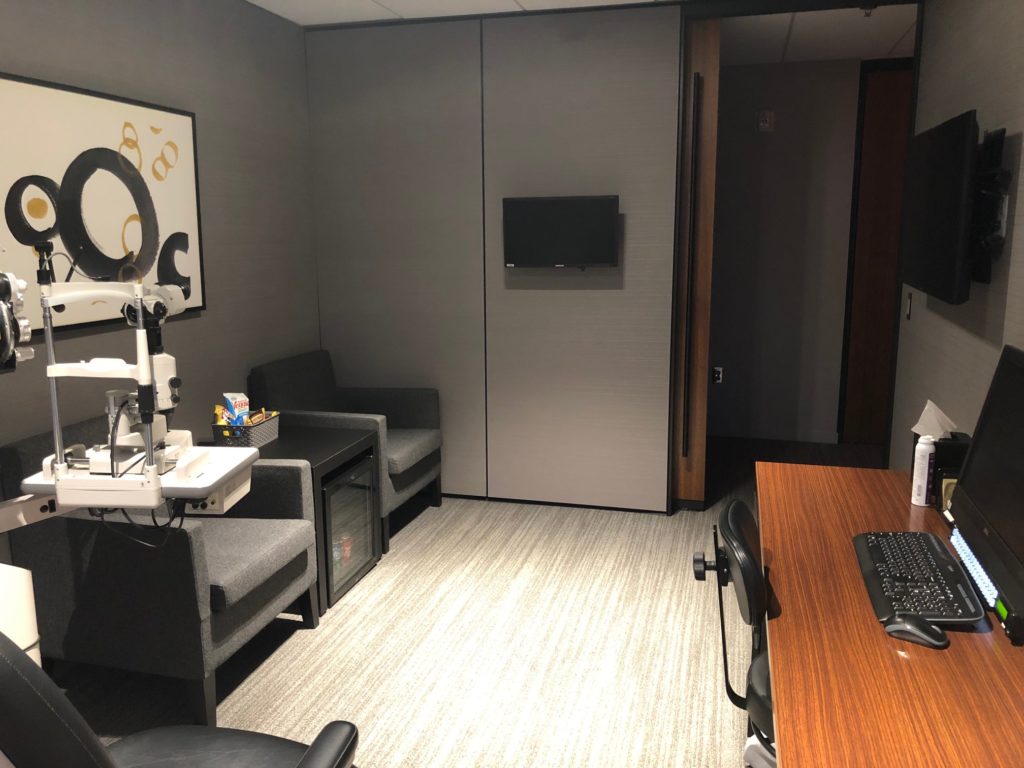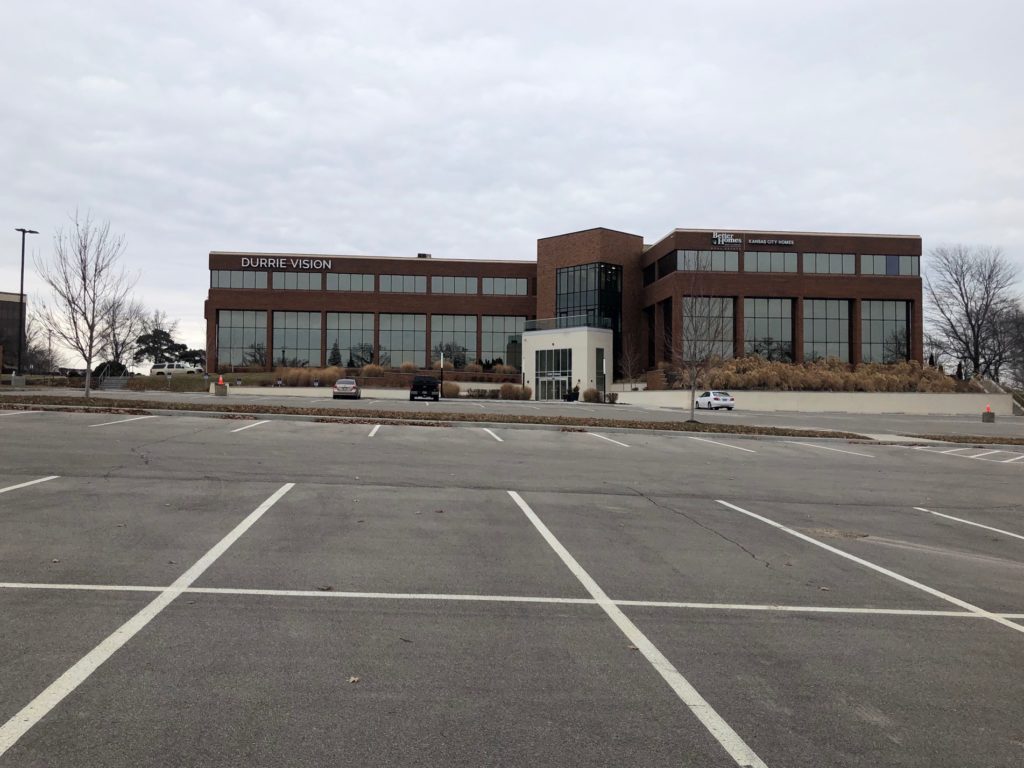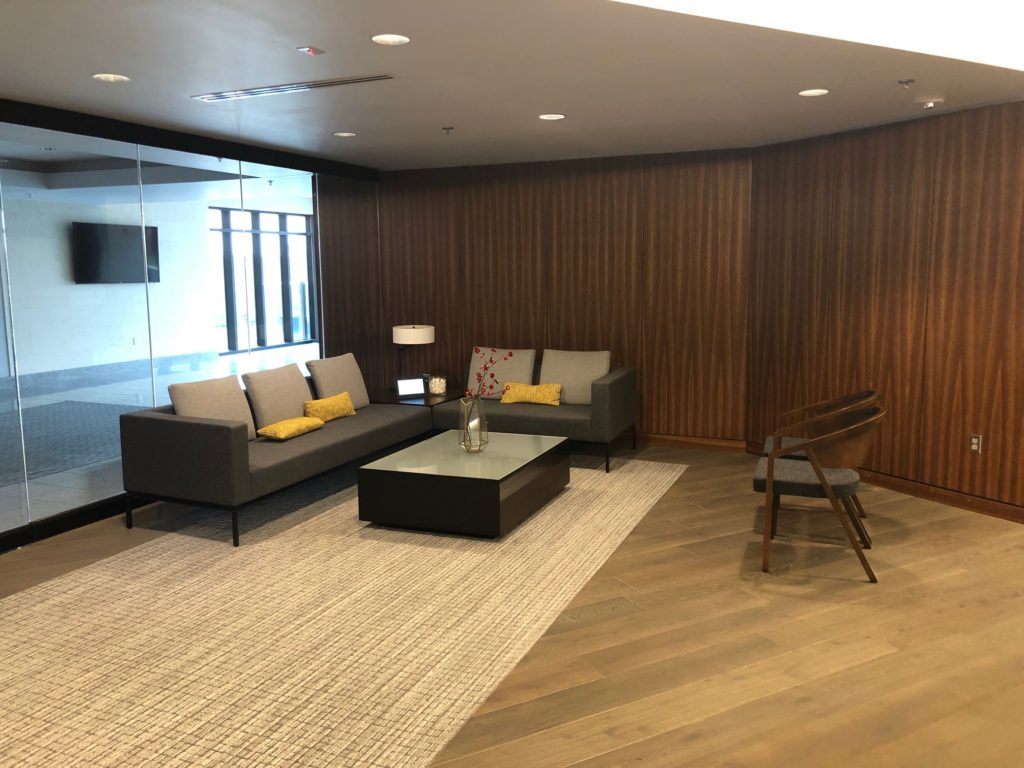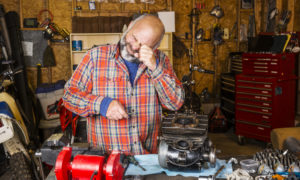By Suzanne LaKamp, OD, FAAO

Feb. 6, 2019
In the past year, my practice, a shared OD-MD practice in Kansas with a refractive-surgery focus, relocated down the street from its previous location. The move was made to accommodate a growing practice, improve clinic flow and enhance the patient experience, and that of the patient’s guests. Friends-and-family referrals are a key way we grow our practice, so ensuring that not only the patient, but guests the patient brings along, are comfortable, is essential to our growth.
Revenue over the year has steadily increased since the move. Fall 2018 had new surgery patients over 110 percent above our target.

In the new office, guests of patients have a comfortable place to wait, and can watch their friend’s or family member’s surgery in real time on a TV screen.
Enhanced Space for Pre-Op Patients & Guests
One the the biggest physical changes and improvements was to enhance space for patient pre-op rooms. We increased laser surgery pre-op rooms from two to four. The rooms were also made to be 50 percent bigger than before. A refrigerator with drinks and a snack table was added. There are also new large-screen monitors in the rooms for patient guests who would like to watch the surgery as it’s happening.
The patient experience is one of the major ways our practice sets itself apart from competitors. Patients must have a driver on surgery day, and often additional colleagues, family or friends will join the patient in the pre-op room. These same guests are sometimes interested in surgery themselves, so we want their experience to be just as great as the patient’s experience. We include these visitors in the experience, which is the main reason for the new television monitors in the pre-op rooms.

More parking means fewer patients arriving angered that it took them a long time to find a parking spot, and the ability to see more patients per day.
More Parking Space & Improved Exterior
Adequate parking improves patient satisfaction. There is now three times the amount of accessible parking space compared to our old location, which is important to our patients. The building facade was also updated for improved aesthetics.
The improved parking makes it easier for new and existing patients to visit the practice. Patients can come and go quickly. Also, the parking lot is the patient’s first impression of the building and the practice. Starting off on a positive note is easier than trying to overcome cranky patients who spent 15 minutes looking for parking. Timely patients mean a smooth schedule.
From a financial perspective, more parking means the practice can accommodate more patients at a time.
We lease our office space, so building maintenance is included in the rent we pay. But if you do own your own building, it is worth hiring help for lawn care and outside maintenance. Costs will vary from full- to part-time help, but a clean exterior is what patients first notice. Careful exterior maintenance is especially important for practices affected by winter climates. Salting the sidewalks and snow removal are a safety and liability concern.
Our building management pays for maintenance, and has a maintenance supervisor who does an excellent job of keeping the grounds clean of debris, updates the foliage seasonally and keeps appearances up.

The new office features less seating in the reception area because a new, much-faster check-in process was instituted concurrent with the move.
Less Seating in Reception Area & Faster Check-In
To reduce patient wait times, we streamlined the patient check-in process. A patient rarely needs to wait now upon arrival. We have comfortable seating with two nice couches and a few chairs, but not an entire room full of seating like in the previous practice. A technician waits at the front of the office for each patient’s arrival. For cash-pay patients, like ours, reduced wait times are essential to meeting patient expectations for a premier medical practice.
We hired more technicians, and cross-trained staff so that there is always someone available to do the patient pre-testing. Most paperwork is completed online, before the patient walks through the door. The goal is to become paperless, which further frees up the front staff. Technicians also don’t spend as much time entering new information and charting when paperwork is already completed.
If a practice needs to hire additional technicians to do what we did, the cost can be around $21,000-35,000 annually in the Midwest, where my practice is based. For a cash-pay refractive practice, this cost can be recouped in five additional laser surgeries or three lens surgeries for the year.
More efficient scheduling accommodates a larger number of patients. For a post-op clinic, about 3-5 more patients per half day can comfortably be added to an already busy schedule. Reducing wait time gets the patient to the doctor faster.
 Suzanne LaKamp, OD, FAAO, is an associate at Durrie Vision in Overland Park, Kan. To contact: dr.suzanne.lakamp@gmail.com
Suzanne LaKamp, OD, FAAO, is an associate at Durrie Vision in Overland Park, Kan. To contact: dr.suzanne.lakamp@gmail.com

























